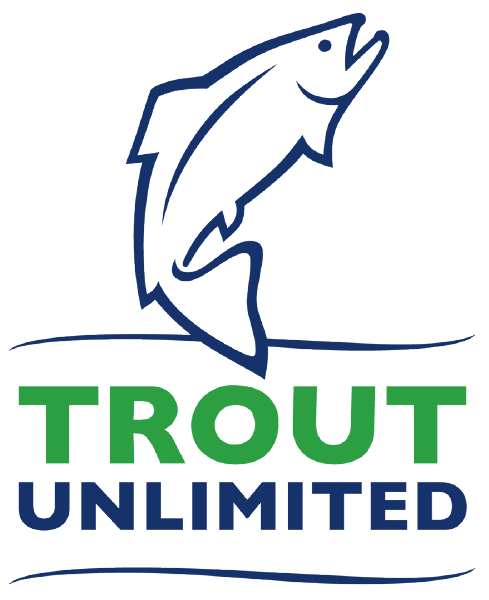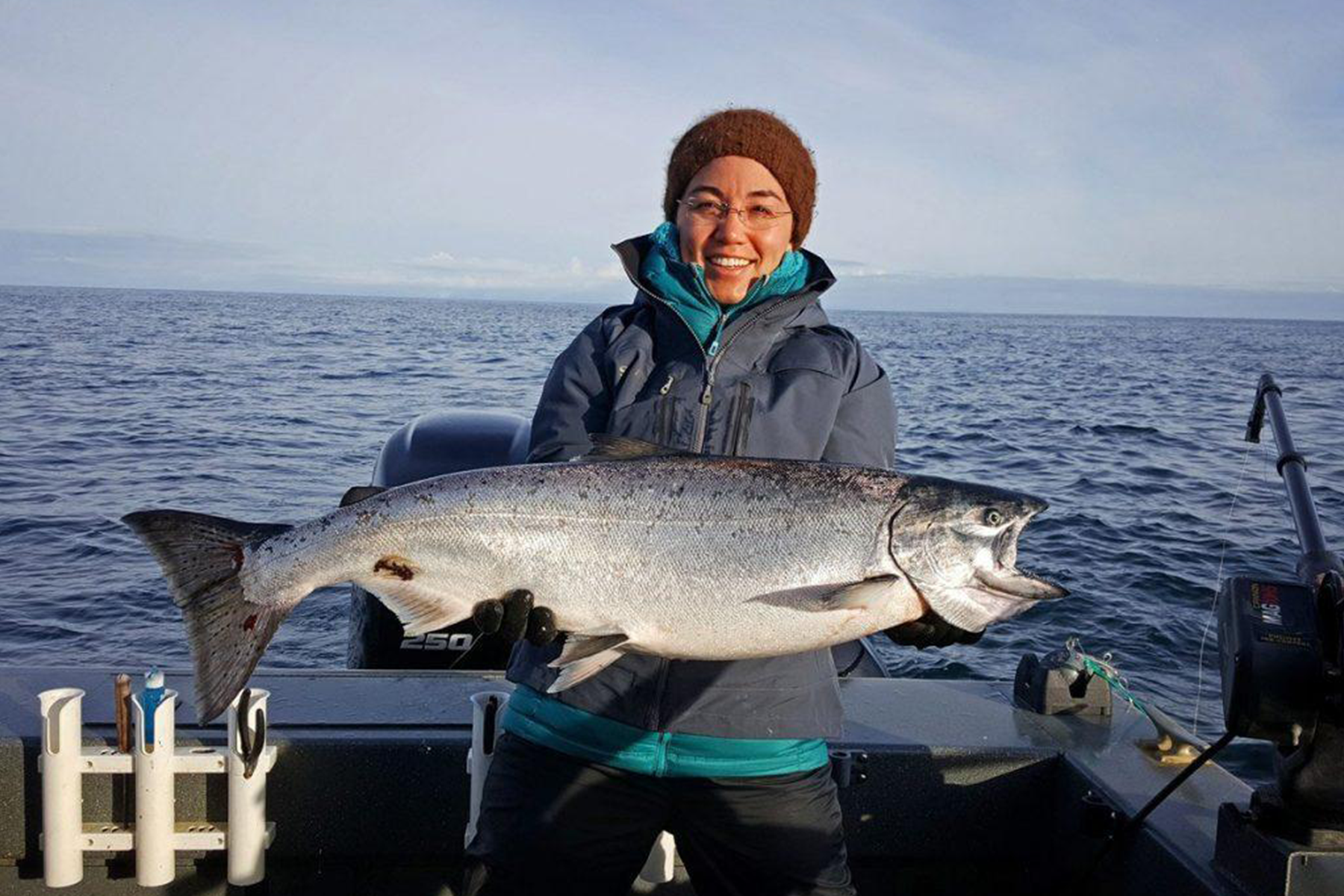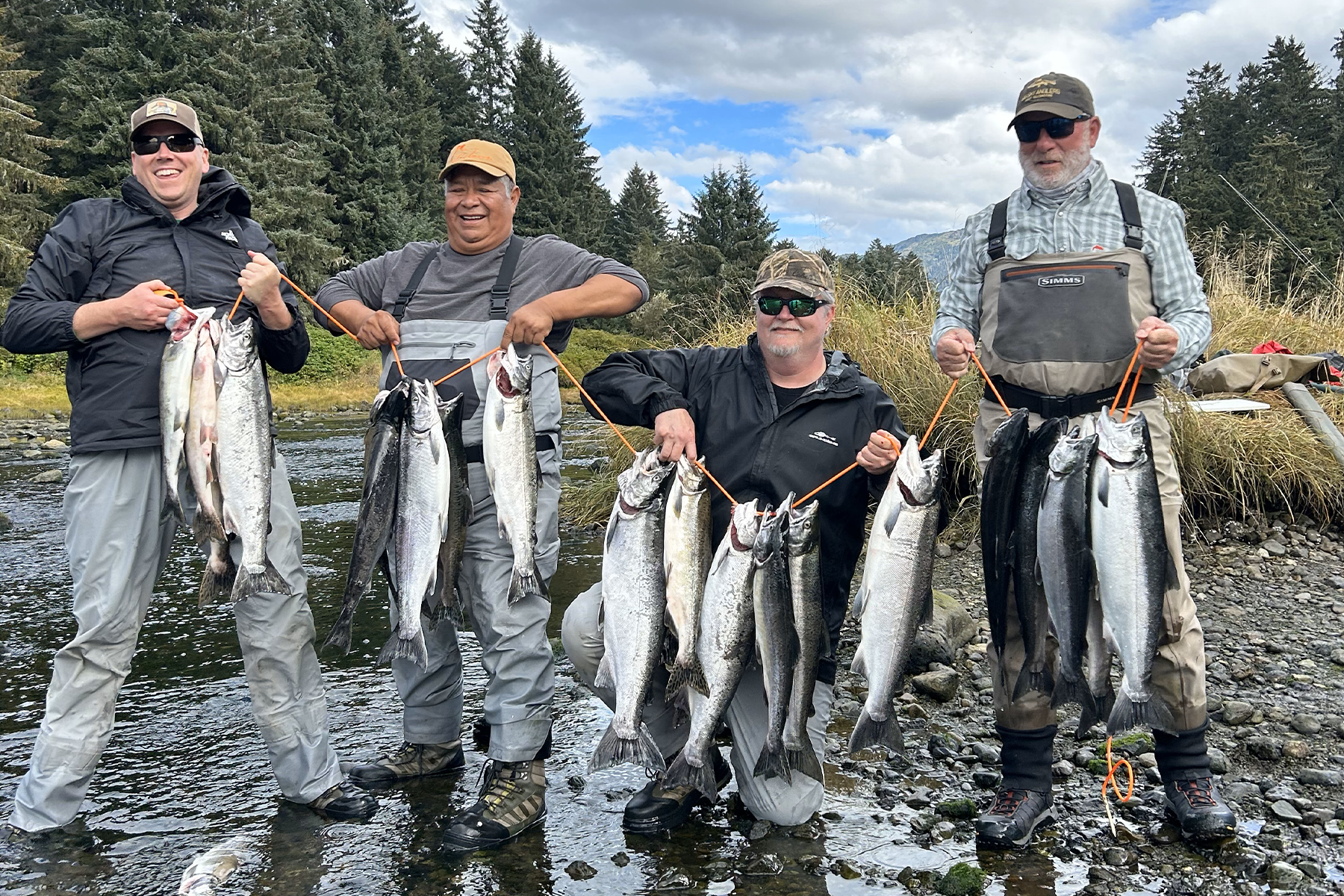Jigging for Alaskan Halibut
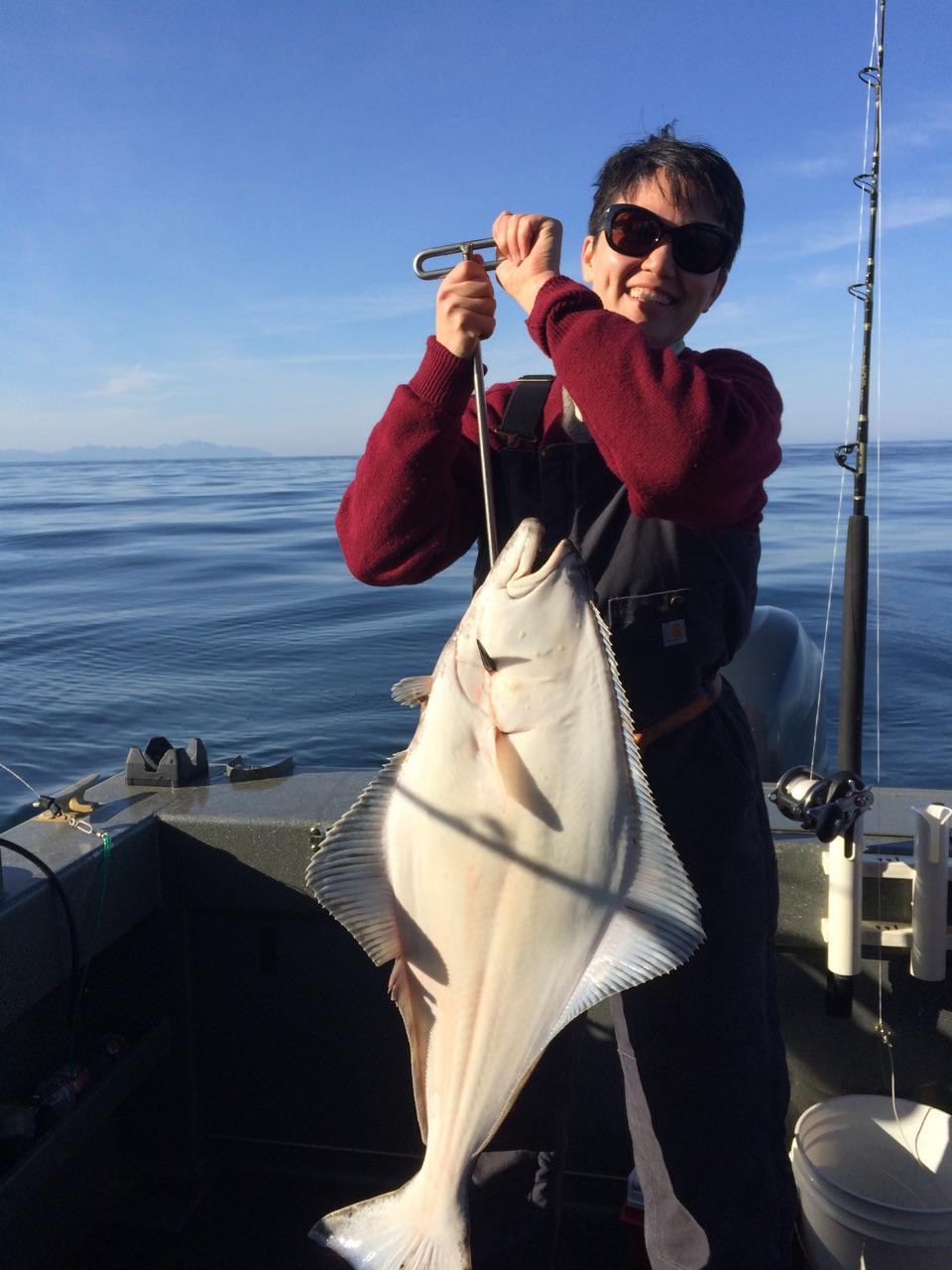
by Chris Brewer
Alaska halibut fishing is the #1 offshore sport fishery in the state and with good reason: The fishing is fun, the meat is tasty and versatile, and the sights are spectacular (especially on a sunny day in Southeast Alaska).While you can catch halibut in pretty much any part of the ocean along the coast, Alaska’s Boardwalk Lodge offers exceptional
among the protected waters of Alaska's Inside Passage. Boardwalk's saltwater skippers know where the special holes are, the ones that host higher concentrations of bigger fish more consistently. That said, even the best guide and the most prized fishing hole have a few slow days, and that’s where jigging for halibut comes in handy.
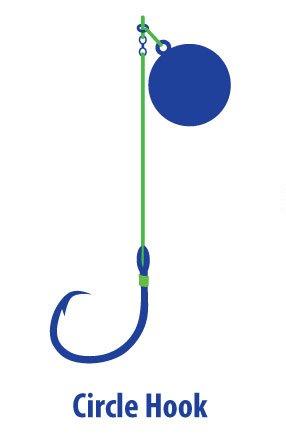
Figure 1Bait and circle hooks are often used when Alaska halibut fishing (See Figure 1). A weight is tied on above the baited hook and the weight is gently bounced along the bottom of the ocean with the bait trailing behind it. When you feel the tug of the fish, you gently lift and reel using a steady pressure. This turns and sets the hook in the fish’s mouth. Fishing with a circle hook is very effective when the bite is on, but when fishing is slow, baited circle hooks can be
BORING
. This is especially true on a cloudy, rainy day where the best and only view just might be the back of your buddy’s raincoat.Enter jigging.When the bite is slow, jigging for halibut can increase the action by 3x or more (in my personal experience). Sometimes just one person jigging on the boat is enough to get the fish stirred up and create a bite for all.What is a jig?
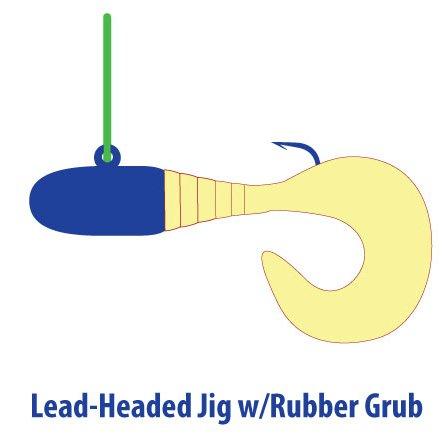
Figure 2A jig is a hook that is front-weighted so that it’s shank runs perpendicular to the leader line. “Jigging” is the action you use to attract the fish. Halibut jigs are large, lead-headed bullet jigs. They are usually dressed with a rubber grub that has a long wiggly tail (See Figure 2), but skirts that look like squid may also be used. Depending on the depth you’re fishing and the water current, the jig weight will range between 12 and 20 ounces. Bait or scent oils are often used to increase interest in the jig.For convenience, jigs are usually fished on the same short, heavy, halibut rods used when fishing with circle hooks and bait, but the fishing action is very different. Instead of lowering down and gently tapping the bottom with the weight (as when fishing with a circle hook), jigging is a series of short, sharp movements designed to attract attention.Release line until you find the bottom, and close the bail. Then, in one or two, sharp, jerky, motions, bring your rod up 2-3 feet from horizontal. Let the jig sink back down until you feel the weight tap the bottom, repeat these short, jerky upward movements. You can add a little jerk up, as it sinks back down to keep the grub tail dancing in the water. Keep the jig moving. Don’t let it rest on the bottom otherwise you’re likely to get snagged, especially if you’re drifting.
The action of jigging creates visual stimulation that can trigger the strike instinct in the halibut, even when they’re more or less off the bite. Think about your children, maybe they want your attention, but they’re playing more or less peacefully and you’re half asleep on the couch. When they start flashing the lights on and off and waving streamers in your face, you’re going to wake up and respond. This is essentially what jigging does with halibut. Keep that rubber grub tail dancing and flashing to draw as much attention as possible.When Alaskan halibut strike a jig, it’s a sharper tug than when they pick up the bait on the circle hook. When you feel the fish strike, give a quick, sharp jerk to set the hook, and then, as with any good fight, keep the pressure on. Slack in the line is not your friend. If you reel slowly and consistently, the fish will generally behave better, and you’ll have a much more enjoyable, less exhausting day.
If you’re in the mood to spice things up a bit, try Alaska halibut fishing on a lighter weight jigging rod with a flexible tip. Personally, this is my favorite way to fish for halibut. There’s more physical movement (especially nice on a cold day), generally more biting action, and the fight is longer and more fun. I’ve seen a 100+ lb halibut landed on a jigging rod, it takes a while, and you’ll probably think you’ve snagged the bottom, but it’s definitely one fish you’ll never forget.Happy fishing!
1-907-204-8832
support@boardwalklodge.com
Alaska's Boardwalk Lodge 1 Cook's Cove Thorne Bay, AK 99919
Monday - Friday :
8:00 AM - 9:00 PM

Support
- Policies
- Contact
- Blog
- Frequently Asked Questions
- Why Boardwalk Lodge?
- What's the Orvis Endorsement?
- HR
- Privacy Policy
- Boardwalk Rewards
- Travel/Booking Agent Program
- Pro Fish Partners
- Promotions
- Bring Home Fish Guarantee
- Corporate Fishing Trip
- Family Reunion Fishing Trip
- Military Discount
- Responder Discount
- Teacher Discount
Boardwalk Lodge Supports




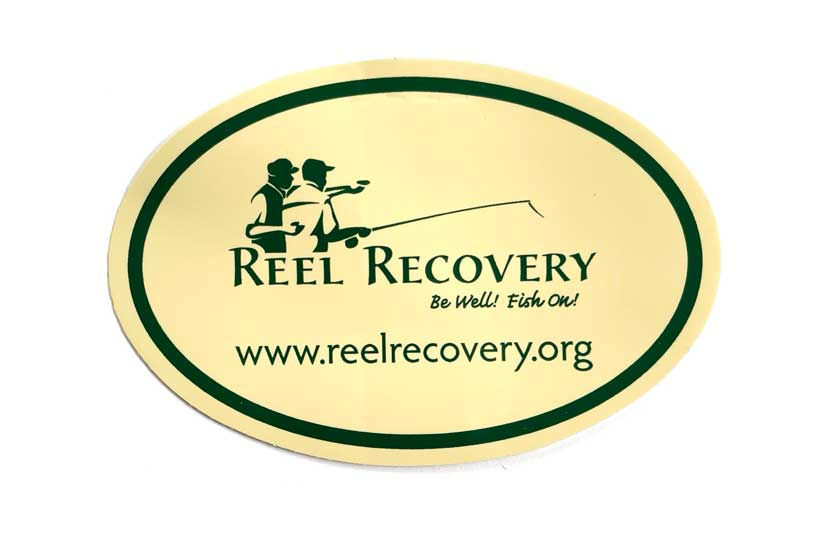




Our Partners


